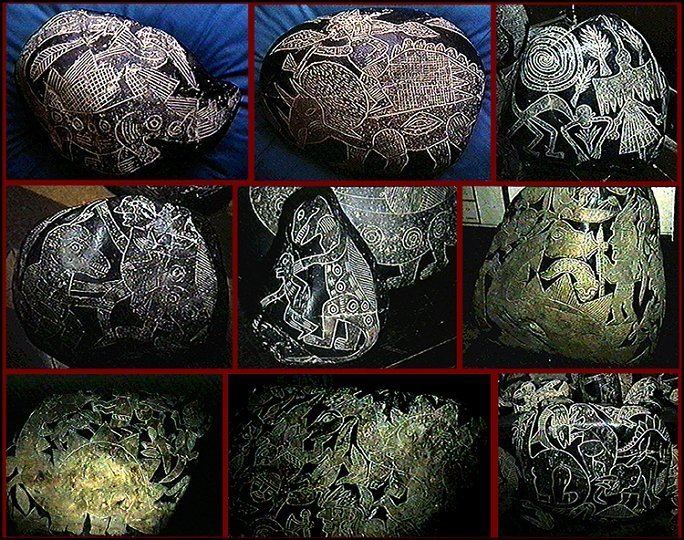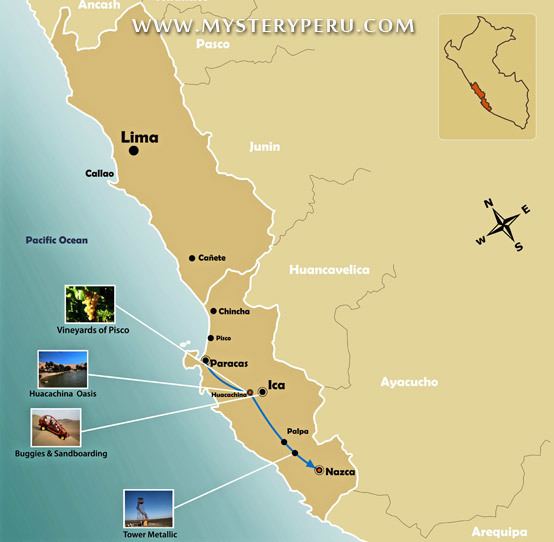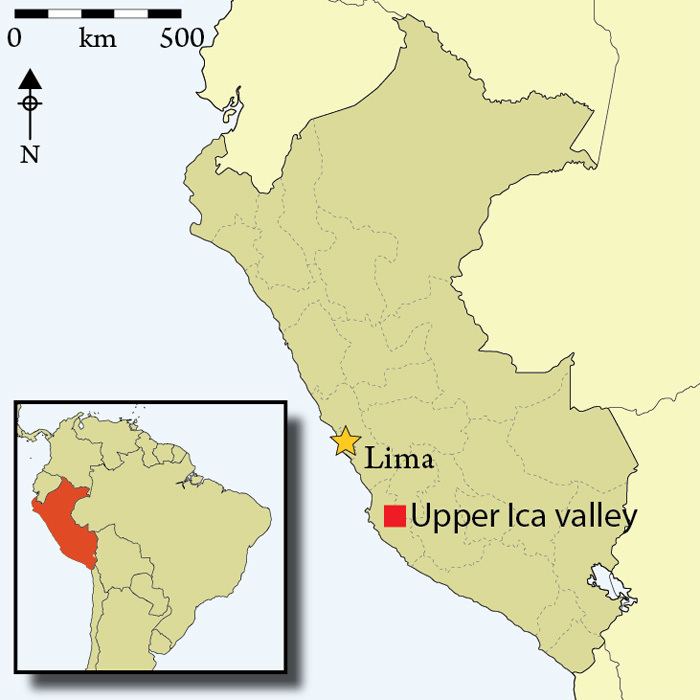Country Region Mayor Mariano Nascimiento | Founded 1563 Population 219,856 (2007) | |
 | ||
University Saint Aloysius Gonzaga National University | ||
Map of Ica, Peru
The city of Ica is the capital of the Ica Region in southern Peru. While the area was long inhabited by varying cultures of indigenous peoples, the Spanish conquistador Gerónimo Luis de Cabrera claimed its founding in 1563. As of 2005, it had an estimated population of over 219,856. The city suffered extensive damage and loss of life during the 2007 Peru earthquake.
Contents
- Map of Ica Peru
- Dinosaurs and people living together the ica stones of peru
- Sandboarding experience in ica peru
- Location
- History
- Transportation
- Tourism
- Agriculture
- Climate
- References

Dinosaurs and people living together the ica stones of peru
Sandboarding experience in ica peru
Location

The city is located on the Ica River about 300 km to the south of Lima, along the desert coast of southern Peru. Further south along the Pan-American Highway lies the city of Nazca.
History

In 2007, researchers found the fossil remains of a prehistoric penguin, Icadyptes salasi, which inhabited the Atacama Desert about 30 million years ago. Scientists estimate it was about 4.5 or five feet tall, with a foot-long beak.

Evidence of prehistoric indigenous civilizations has been found in the nearby deserts, such as that of Paracas. These included the Paracas and the Inca, the last of whom were a people who encountered the Spanish. Numerous pre-Columbian archeological artifacts are displayed in the Museo Regional de Ica.

The Spanish colonial city was founded on 17 June 1563 by Gerónimo Luis de Cabrera as Villa de Valverde. It was ruled by Spain under colonial rulers until Peru achieved independence.
On 15 August 2007, a magnitude 8.0 earthquake occurred off the coast of Peru, severely damaging buildings, houses and infrastructure in Ica. Initially 17 people died and 70 were killed when a church collapsed. Pisco was even more severely damaged than Ica, with many people buried under buildings which had fallen; 80% of the city's buildings were destroyed.
Transportation
Ica can be reached from Lima by the Pan-American Highway. The distance is almost exactly 200 miles or 320 km. The trip takes about 4.5 hours by bus, 4 hours on motorcycle and 4.1 hours on a car.
Tourism
Ica and surrounding areas are the traditional source of Pisco brandy. Ica is the site of the Museo Regional de Ica, a regional museum with exhibits ranging from prehistoric artifacts to the Spanish colonial era. On display are pre-Columbian funerary bundles and mummies, whose elongated skulls from the Paracas and pre-Inca cultures suggest ritual deformation, perhaps a mark of the elite. Some skulls also bear evidence of trepanning, a kind of early brain surgery to relieve internal pressure or remove damaged skull matter suffered in battle. There are also furniture, paintings and artifacts from the Spanish colonial era.
Ica's location in the desert provides unique opportunities for tourism, such as the nearby Huacachina oasis, located in the midst of sand dunes. It attracts international travelers, as well as resort seekers from Peru. Some young visitors try sandboarding; others travel the dunes in sand buggies.
Agriculture
The many days of sunshine have made Ica the center of an important agricultural region. Commodity crops are cotton, grapes, asparagus, avocado, mango, olives and other produce. It is known by Peruvians as the "Land of the Sun". Although there are the four seasons, the warm dry climate makes it feel like summer year-round. The climate of the city can help in easing asthma, which is aggravated by damp and humid climates and their associated allergens.
But given the desert climate, agriculture has been relying on an aquifer fed by glacial melt water, and is currently exceeding the inflow of water into the aquifer. The aquifer is quickly drying up, leading to calls for more efficient irrigation, or adding dams and water diversions.
Climate
Ica lies on the border of the Atacama desert and has one of the driest climates in the world Köppen BWh with only around 1 inch of rainfall for the whole year. Temperatures are hot during the summer months (December - March) and warm through the winter months (June - September).
